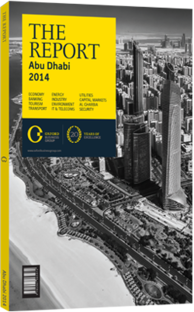A key component: Adding manufacturing capacity for aluminium products
Abu Dhabi is emerging as an important global supplier of aluminium. As capacity expansions push the emirate towards the top of the rankings, plans are in the works to build additional manufacturing capacity around the material for finished and semi-finished products. Indeed, over the coming years, the aluminium cluster at the Khalifa Industrial Zone Abu Dhabi (Kizad) will become a central component of the emirate’s total industrial output.
Capacity Upgrade
Emirates Aluminium (EMAL), which recently merged with Dubai Aluminium, the government-owned producer of Dubai, is the sector’s major player. With its smelter fully operational in Kizad from 2011, the company has a current production capacity of 800,000 tonnes per year. However, in 2014 this will increase when its $4bn phase-two expansion project is finished. By the end of 2014, capacity will stand at 1.3m tonnes per year. The smelter is the centrepiece of the new zone and has its own dedicated berth at Khalifa Port and a power plant with a capacity of 3000 MW. More broadly, an integrated supply chain, from the sourcing of bauxite in Guinea to the delivery of aluminium to the extrusion sector, is being developed in Abu Dhabi.
However, there are question marks over the need for more supply in the international market. A current supply glut, coupled with a sluggish global economy, is leading to flat prices. In 2013, smelters are expected to operate at 84% capacity globally, producing a total 47.6m tonnes with a capacity of 56.9m tonnes. Even as companies withhold capacity, however, aluminium prices remain subdued. In November 2013, they stood at $1776 per tonne, a drop of more than $300 per tonne since the beginning of the year, and below the $2758.75 per tonne post-crisis recovery price in April 2011.
Consolidation & Competition
Nonetheless, EMAL remains bullish. The firm’s CEO, Saeed Al Mazrooei, predicts that demand for aluminium will increase from a current level of 46m tonnes to 60m tonnes by 2015. Now that EMAL has merged with Dubai Aluminium, the new entity, Emirates Global Aluminium, will be the world’s fifth-largest producer with an estimated value of $15bn. Production will reach 2.4m tonnes in 2014.
The new company will be a major global player, but with the world’s largest producer, Rusal, cutting production by 300,000 tonnes in 2013, following a reduction in revenue of almost 12% in 2012, the environment is expected to remain challenging for producers. Nonetheless, in the coming years, Abu Dhabi is likely to move further up the value chain.
Building A Cluster
Currently, about 200,000 tonnes of aluminium is consumed domestically, but this should increase steadily. This will be facilitated by the “hot metal road”, a dedicated route for transporting molten aluminium from EMAL’s smelter to Kizad’s casting and extrusion companies. Al Mazrooei told OBG, “The key to unlocking the potential of the aluminium industry is to continue supporting its downstream expansion. The establishment of industrial zones like Kizad has been instrumental as it encourages clustering. This allows companies to be in close proximity to one another, thereby enabling them to create a more efficient supply chain and streamline manufacturing processes.”
The first substantial move to develop a local aluminium cluster came in October 2013, when it was announced that Senaat, formerly known as the General Holding Corporation, will establish a joint venture with Ducab, a cable manufacturing company based in Dubai and jointly owned by Senaat and the Investment Corporation of Dubai.
The new company, Ducab Aluminium, will establish a $60m, 50,000-tonne-per-year aluminium rod mill that is set to open in 2016. The plant will also produce electrical connectors and wiring and is expected to be operational by early 2016. The rod mill will be the first in the UAE, but this announcement should be the first of many in the coming years.
You have reached the limit of premium articles you can view for free.
Choose from the options below to purchase print or digital editions of our Reports. You can also purchase a website subscription giving you unlimited access to all of our Reports online for 12 months.
If you have already purchased this Report or have a website subscription, please login to continue.

